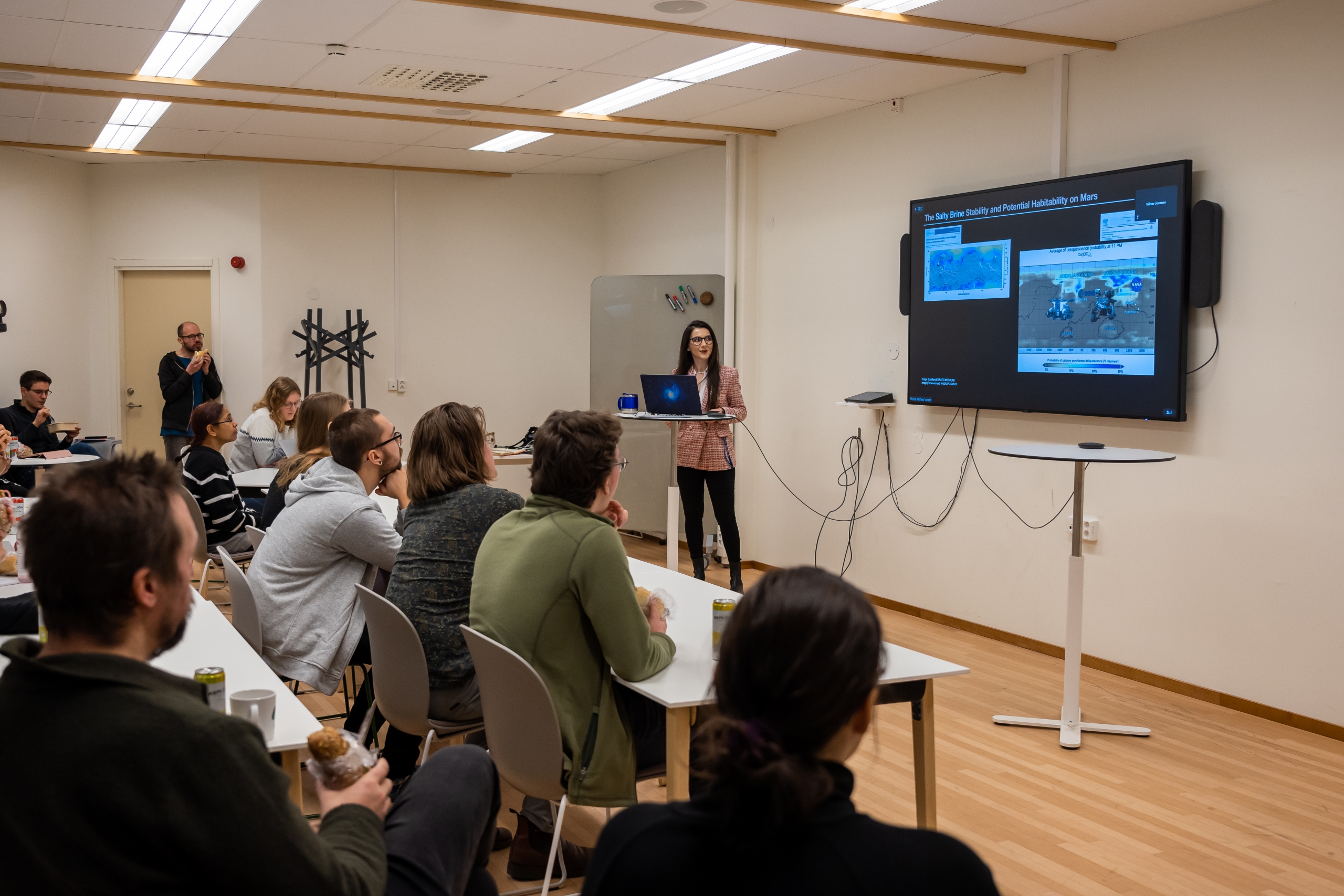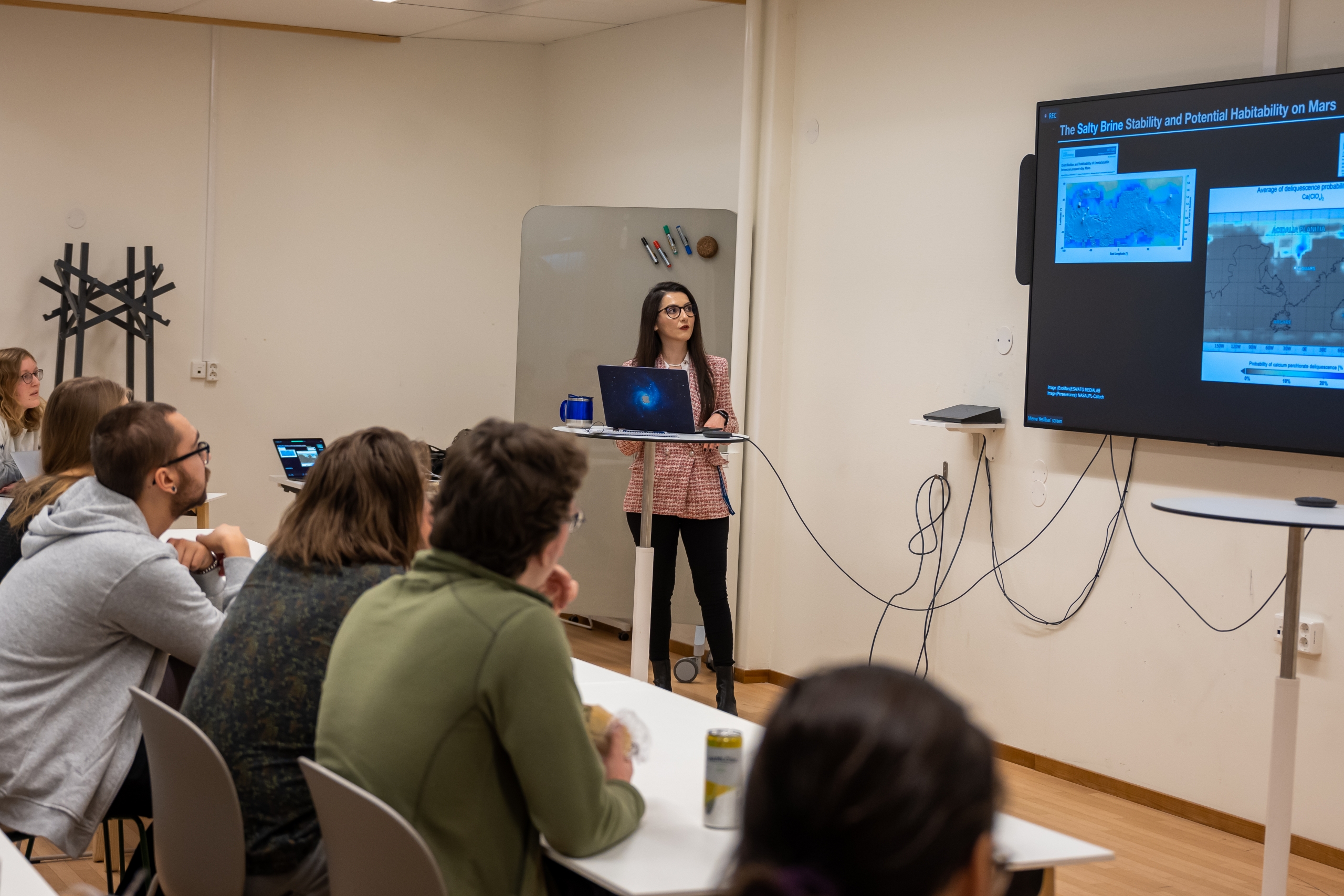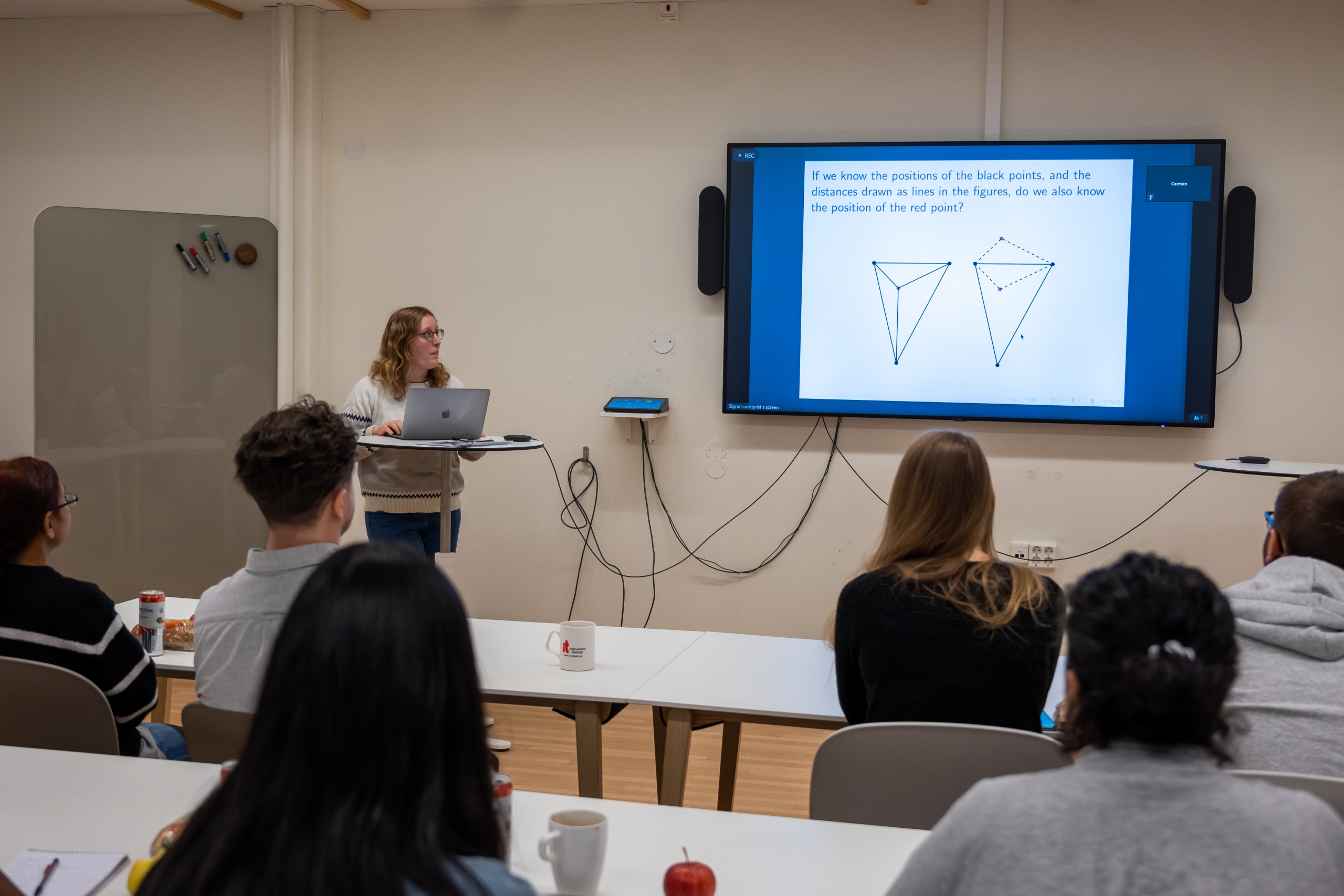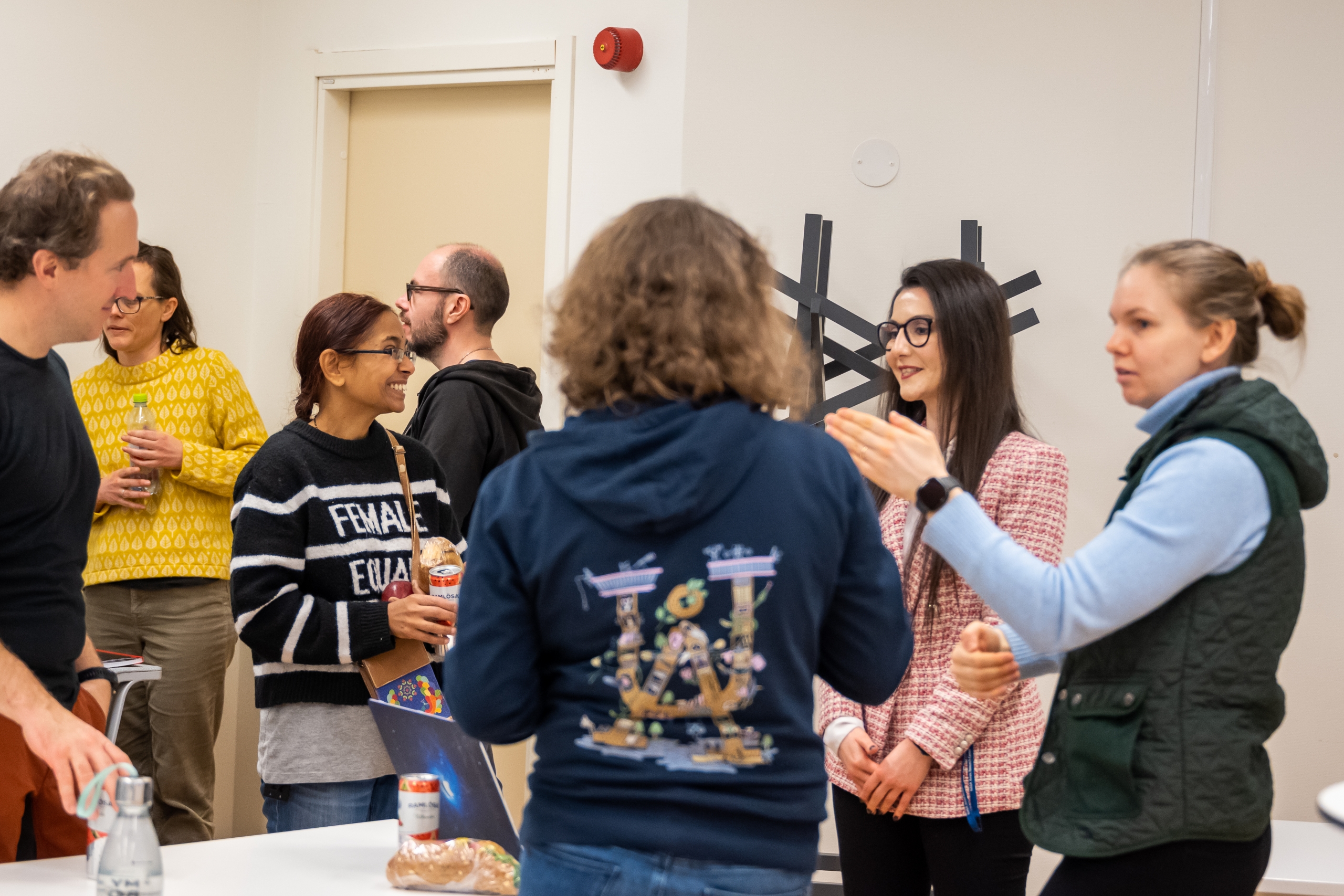Mars and Motion
March 1, 2022
First Pitcher: Merve Yesilbas, Assistant Professor at Department of Chemistry and Group Leader of Yeşilbaş Lab. ‘Planetary Geochemistry and Spectroscopy’. Umeå University
Following the Water on Mars: Is it just a cold desert or habitable environment?
Mars seems like an inhabitable frozen desert today, and extreme conditions allow no stable water on the surface. Still, the near surface of Mars could stabilize liquid water with the help of hydrated minerals and salts. Recognizing the water retention capability of martian soils could pave a new pathway for astrobiology studies to search for life, understand the aqueous geochemical history, and even potential water resources on Mars.
Merve’s research focuses on the extreme dry and cold environments on Earth as analogues to Mars. She chiefly uses vibrational spectroscopy to understand the geochemical changes on the planet Mars. In this pitch, she shows how salty martian soils transform from permafrost to slush and then to dry soils during diurnal cycles. She discusses how we can search for water and life to support the ongoing and upcoming Mars missions of National Aeronautics Space Administration (NASA) and European Space Agency (ESA).
Second Pitcher: Signe Lundqvist, PhD student at the Department of Mathematics and Mathematical Statistics at Umeå University, working with Klara Stokes and Lars-Daniel Öhman.
Can we use combinatorics to predict motions of molecules?
Can we use combinatorics to predict motions of molecules? Molecules can be modeled by combinatorial graphs: sets of vertices representing atoms and edges representing their bonds. The aim of combinatorial rigidity theory is to develop simple tools to determine when structures, for example models of molecules, can move. Rigidity theory has a wide variety of applications, for example in network localization, computer graphics and mechanism theory.






